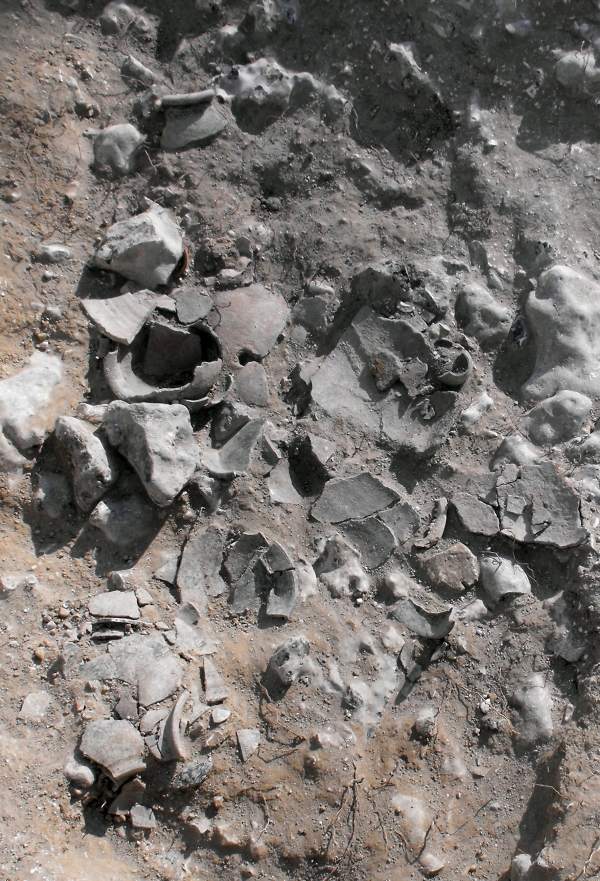
Our image for VM_365 Day 98 is of an unusual archaeological deposit which was found in 2009 during the excavation of the Roman Building on the cliffs above Viking Bay at Fort House, Broadstairs .
The Fort Hill building is located at the eastern end of our map of Roman Thanet. This was the second Roman building to be found at Broadstairs, after the very truncated remains of another Roman building were found at Stone Road in 2004.
The archaeological sequence tells us that the buildings may have been abandoned in the later 3rd century, as the stone lined cellar we excavated had been at least partly filled in with a yellowish gritty deposit. Later on a deep ditch or pit had been cut from ground level through the backfill of the cellar.
We can say that this happened around 300 AD because of the ceramic material that was found at the base of the pit. Covered by a sticky dark soil deposit with many oyster shells contained in it was a dense mass of pottery sherds and large sections of vessels. The sherds lay over several large rounded boulders of the type used to build the walls of the cellar, which may have come from the demolition of the upper parts of the structure, tipped in before the pottery was dumped.
Our image today shows the layer of sherds after they had been isolated and defined carefully by the archaeological team. A close look at the image shows how many different types of vessel were represented.
As the vessels were removed, each group of sherds or distinctive vessel was surveyed to locate its position and then the sherds were carefully removed. Our pottery specialists examined and dated each of the vessels, concluding that they formed a very tightly dated group, which we can say form the archaeological evidence were certainly all dumped in the pit or ditch at a very similar time, if not all at once.
Although little was left of the building we excavated, a deposit like this has the potential to tell a detailed micro-story in the history of the structure and consideration of each of the vessels and the group itself gives valuable insights into the use and eventual abandonment of the site. Our initial interpretation form the vessels recovered are that they are the contents of a Kitchen, with the vessels representing part of a working set of crockery that were probably in use together.
Over the next series of VM_365 posts we will explore more of the detail of this interesting discovery, the connections between them and the stories they generate about this important site.
2 thoughts on “VM_365 Day 98. Roman Kitchen crockery from Broadstairs”